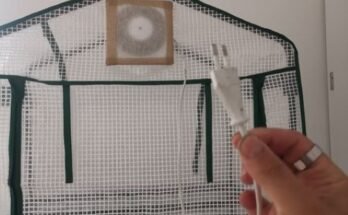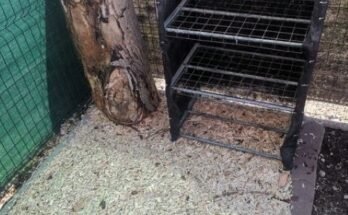Growing mushrooms is easy and you can grow them at home in a limited space. The good news is that unlike other businesses mushroom cultivation doesn’t require a lot of investment. However, growing mushrooms can run into some problems.
Beginners often struggle while growing some common types of mushrooms. So, make sure you know the common problems that you may encounter during the process before starting your mushroom cultivation journey.
In this article, I will share with you the common problems that you might face while growing mushrooms and how to deal with these problems.
First look at the common problems in growing mushrooms:
- Poor yields
- The use of low-quality spawn
- Bad substrate
- Improper conditions for growth (temperature, moisture, light, etc.)
- Lack of patience
- Common pests and diseases (bacteria, fungi, insects, and snails)
- Low hygienic practices during substrate preparation and spawning
- Poor hygiene conditions in the grow rooms
- Improper sterilization of the substrate
- Unsterilized working equipment and instruments
- The open doors and windows without any wire mesh allow the insects to enter the mushroom cultivation rooms
- Improper disposal of the used substrate
The monetary benefit is the prime factor for setting up any business. If you don’t get appreciable yields, it will only bring you frustration. Therefore, to ensure that your mushroom growing business works well and gives a quick return, you must learn how to avoid the common mistakes while growing mushrooms.
How to avoid the common problems in growing mushrooms?
This is the most important question that must be addressed properly to make your mushroom business a success.
Let’s look at the common problems and their solutions one by one.
Use high-quality spawn
Like plants are propagated from seed, mushrooms are propagated from the spawn. Spawn is the reproductive or propagative unit of mushrooms. The yield of mushrooms chiefly depends upon the use of good quality spawn. Always purchase spawn from a reputable source, a credible dealer, or a store. The spawn should not be too old and should be free from disease or contamination by other microbes (fungi and bacteria). Always procure a younger strain of known history and vitality.
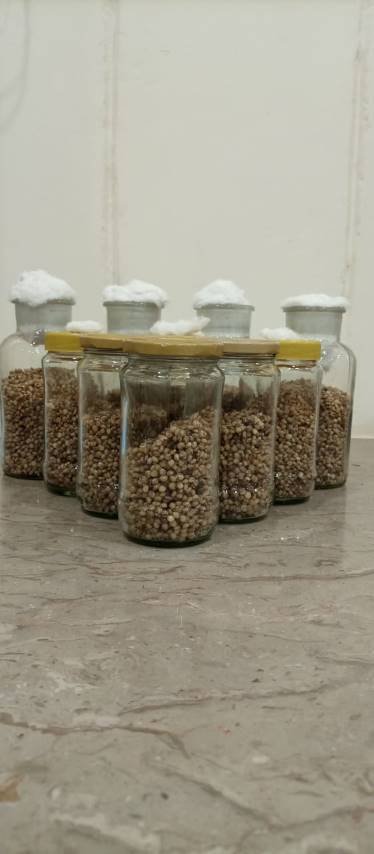
One of the major limitations in growing mushrooms is the non-availability of good quality spawn. Therefore, look for the source where you can get high-quality mushroom spawn that can provide higher yields. If the spawn doesn’t work you must purchase it from another source.
Proper sterilization of the substrate
Contamination is one of the major problems that can lead to the failure of the mushroom cultivation business. It can often occur in substrate bags. The substrate should be sterilized well before spawning. If the substrate is not properly sterilized it will surely lead to contamination.
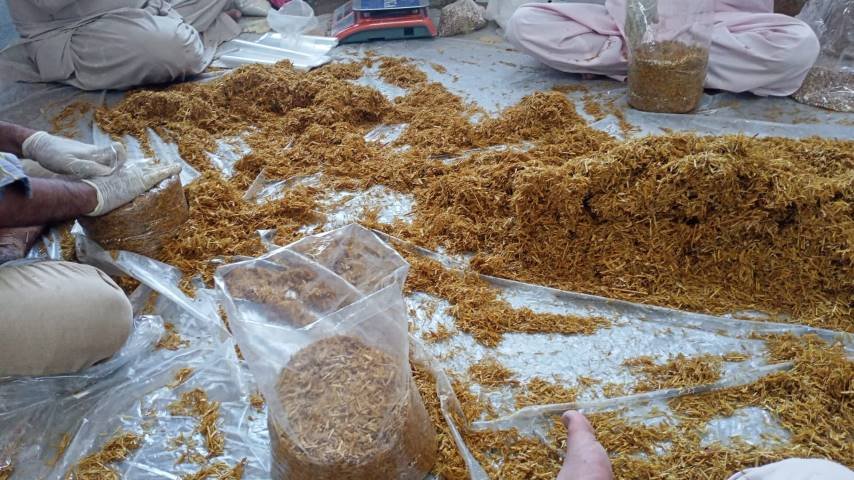
Sterilize the substrate well in a pressure cooker, drum, autoclave, or whatever sterilization equipment or method you are using. Make sure you give enough time for sterilization to allow the complete removal of microbes from the substrate. Follow the complete sterilization protocol (temperature, pressure, and time requirements) with no exceptions.
For sterilization fill the substrate in the bags or buckets and pasteurize immediately after bagging otherwise the concentration of fermentation gas will rise in the bags and will slow down the growth of mycelium.
Also, treat all the work surfaces, equipment, containers, and gloves with alcohol before you begin your work. The working environment or space is very important, so make sure to keep it neat and clean to increase the chances of your success.
Provide suitable conditions for growing mushrooms
Give your mushrooms the right environment that is suitable for their growth. The wrong environment can lead to failure and poor yields or no yield at all.
All types of oyster mushrooms need a specific set of conditions for their good growth. Make sure to check the requirements for the specific type of mushroom that you are planning to grow. The most critical requirements for mushrooms include:
- Proper air exchange
- Humidity
- Temperature
- Light
If you are living in an area where humidity is too low and the temperature often fluctuates, you can install humidifiers and an automated temperature control system in the grow rooms. The automated system will ensure the maintenance of optimum conditions required for taking a good crop.
Mushrooms also need a certain amount of light. The grow rooms should have windows to allow the passage of daylight into the rooms. You can also use artificial lights to provide the required amount of light for the growth of mushrooms.
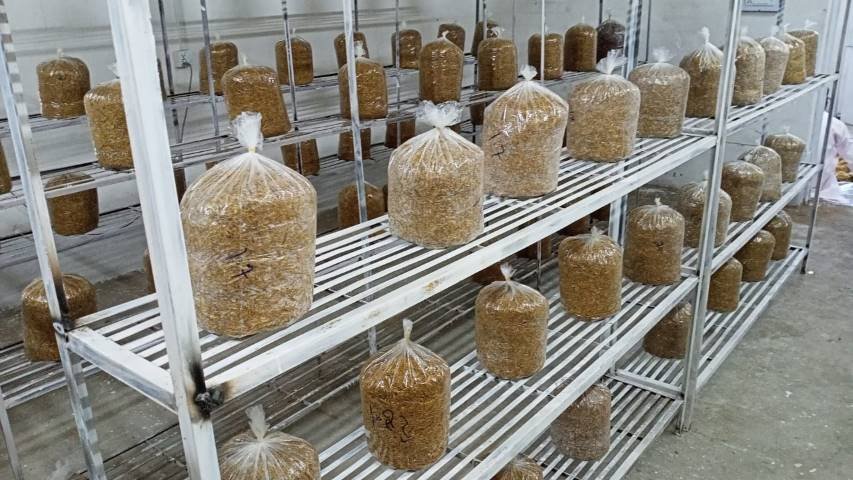
Mushrooms also need properly ventilated rooms. If the ventilation in the incubation rooms is poor it will affect the growth of mushroom mycelium and ultimately the production of fruit. Also, be aware the humidity level in the grow rooms should not be too high. The surface water should be evaporated from the substrate bags several times a day.
Proper ventilation is also necessary to keep the carbon dioxide levels low in the grow rooms. Carbon dioxide levels should not be more than 5%.
Use a fresh and good quality substrate
A substrate is a primary material on which the mushrooms grow. It provides the nutrients, moisture, and energy that mushrooms need to grow well. Make sure the substrate is fresh and good.
Try to obtain a substrate that is suitable for the type of mushroom you are growing and can provide higher yields.
Read about types of Substrate here.
Ensure proper hygienic conditions in the grow rooms
The hygienic conditions of the grow room are critical to ensure success in mushroom cultivation. Mushroom mycelium can be contaminated easily by other microbes or contaminants if the hygienic conditions are poor. Make sure the grow rooms or incubations rooms are neat and clean. Don’t leave the trash in the rooms. Use sterilized equipment and instruments while bagging and spawning.
Discard the used substrate properly
It is important to dispose of the used substrate immediately. Once a substrate is used and has given the produce it can not be reused because the mushroom mycelium utilizes all the nutrients from the substrate to produce the fruit. If the substrate is left unattended or disposed of near the grow rooms, it can cause contamination.
The used substrate should be discarded properly far away from the grow rooms.
Keep patience
The beginners are always impatient to get the first harvest as soon as possible. Mushroom cultivation is a meticulous process that needs precise attention and care so you should not try to rush.
If you don’t show patience and try to complete all the steps of mushroom cultivation in a hurry without following the standard protocols it will lead to a higher risk of contamination. If you try to rush at each stage, you will make your cultivation process a complete mess.
Always give enough time to let your substrate cool down before spawning. If you put the spawn in a very hot substrate bag it will deactivate the mushroom mycelium and the spawn will fail to run into the substrate. Also, make sure that the mycelium has completely covered the substrate bags before the fruiting stage.
Avoid common pests, diseases, and mite contamination
Besides technical expertise mushroom cultivation requires proper hygienic conditions in the grow rooms. If you fail to maintain hygienic conditions, it will increase the risk of contaminants.
To get rid of the common contaminants you must find out the root cause of the problem. The contamination during mushroom cultivation can occur due to several reasons such as improperly sterilized compost, poor hygiene conditions, unsterilized equipment, or instruments.
It is very important to maintain a sterilized environment in the incubation room otherwise it will damage your mushrooms to a great extent. The damage can be reduced greatly if the problem is diagnosed in time and the subsequent remedial measures are taken immediately.
If you see contaminated bags make sure to separate them as soon as possible. Make the substrate again and sterilize for a longer time at a proper temperature. Sterilize the equipment and instruments properly. Maintain good hygiene conditions in the grow room.
The humidity level should not be too high because it can increase the risk of bacterial and fungal contaminants. Maintain the level of humidity in the grow rooms in a prescribed range (85-90%).
Mites can be often seen attacking the substrate bags. Separate the contaminated bags immediately and throw them away from the grow rooms.
Prepare the substrate again and sterilize well. In case of severe contamination, spray the grow rooms with chemicals. Don’t keep the doors and windows open for a long time as they can provide a potential point of entry to the insects. Cover the windows with a wire mesh to restrict the entry of insects into the incubation room.
I hope this article will help you to solve the common problems while growing mushrooms. If you will follow all the necessary practices as discussed above your mushroom growing business will be a sure success.
For more queries and problems about growing mushrooms feel free to write to us.
Check our article about Oyster Mushroom fruiting problems here.


